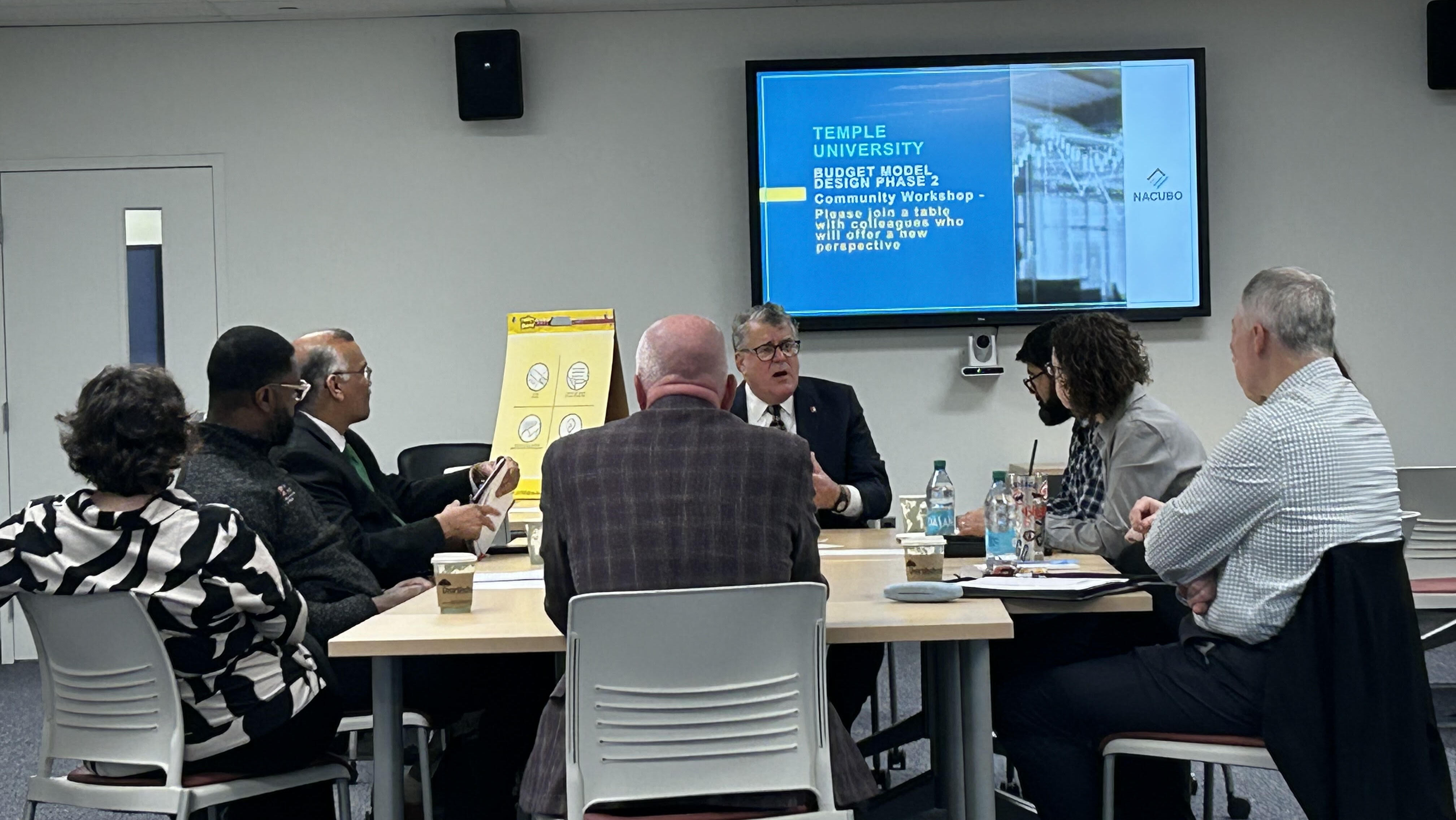Temple hosts budget model workshops
The workshops are part of the Budget Model Design phase and the next step in the process to build a new budget model that will replace the Responsibility Center Management model.

This past summer, Temple University President John Fry shared the results of the Responsibility Center Management (RCM) budget model review, noting that the university would be sunsetting the RCM model at the end of this fiscal year and will design a new model, which will be initiated beginning on July 1, 2026, and fully implemented over the next few years.
This was the recommendation of the Steering Committee, which had worked with a team of advisors from the National Association of College and University Business Officers (NACUBO) since February to conduct the comprehensive review that was informed by extensive campus engagement—including stakeholder interviews, data analysis and benchmarking against peer institutions. The new model is being built from the ground up with substantial input from faculty and staff.
That process continued recently when Temple's Office of the Chief Operating Officer hosted the first of five budget model workshops for budget officers, faculty, department chairs, deans and administrators from across the university.
Leading this session was David Maddox, a consultant with NACUBO and the director of business plan development for Michigan State University. Maddox has worked with colleges and universities across the U.S. to develop financial models and budget systems, assessing organizational models and administrative costs, and building new operating and funding models.
“Across higher education, there seems to be movement away from the heavily decentralized RCM model. Temple is certainly not alone in coming to this conclusion,” Maddox shared with attendees at the beginning of the session. “With any new model, you must have your principles for how resource decisions will be made. So, our plan here is to begin to deliberate on the values to be factored into our model and have it inform the design to be implemented in fiscal year 2027.”
As the session continued, Maddox had attendees participate in small table discussions, with the goal of having diverse roles and perspectives shared as they considered two main topics. Specifically: What values should Temple University factor into its resource allocations? What information should we be using when making resource allocation decisions? And what information will tell us that we are successfully achieving and acting on the things we value?
At one table, Jonathan Latko, assistant vice president of business operations in the Department of Information Technology Services; Chip Hunter, dean of the Fox School of Business; and Maria Ramos, assistant director in the Ethics and Compliance Office, engaged in a thoughtful dialogue focused on two key themes: Temple’s mission and future growth.
“No matter what you think of RCM and no matter what you think of the new version, there will be challenges,” Latko said. “For me, I go back to Temple’s mission. Why was Temple here, and why are we here now? We need to make sure that we are staying true to Temple’s mission with any model that is built.”
“I agree,” Hunter added. “As we move forward as a university, we also need to identify what is focused, mission-based growth for Temple versus growth for growth’s sake. That is why this budget model will be so key.”
Ramos also noted the sense of urgency in making sure that the model that is built is the right one.
“We are at a very critical point in time,” she said. “So, what decisions do we need to make now, so we can continue to grow? That is something that needs to be considered.”
Jason Norris, an assistant professor of theater in the School of Theater, Film and Media Arts, was also seated with this group for the discussion. He brought up a key point that might help indicate whether a new budget model will truly be successful.
“I have heard the phrase before that if true compromise happens, no one is happy,” Norris said. “That might be how we know we get it right.”
These sessions are part of the Budget Model Design phase, which is the first of three coordinated initiatives that are part of the process to build a new budget model. The other two include Academic Program and Cost of Instruction Review and the Review of Administrative Functions and Costs.
Input from these sessions will go to the Budget Model Task Force, composed of faculty and administrators, which will make final recommendations to the president.


